I got to the opera late and missed this. Is there video anywhere?
22.09.2025 04:00 — 👍 0 🔁 0 💬 1 📌 0Timothy Stewart-Winter
@timothysw.bsky.social
Queer historian and professor
@timothysw.bsky.social
Queer historian and professor
I got to the opera late and missed this. Is there video anywhere?
22.09.2025 04:00 — 👍 0 🔁 0 💬 1 📌 0
Allow me to tout my friend @timothysw.bsky.social’s book, “Queer Clout: Chicago and the Rise of Gay Politics”! www.pennpress.org/978081222406...
25.08.2025 00:27 — 👍 4 🔁 1 💬 1 📌 0I know the talk here is about other stuff today, but I've been meaning to write more about my passions. HUGE credit to my dear friend, @timothysw.bsky.social, an Assoc. Prof. of History at Rutgers, who wrote "Queer Clout: Chicago and the Rise of Gay Politics", for his help on the historical notes.
24.07.2025 00:28 — 👍 38 🔁 1 💬 0 📌 0
A history card from the CTA pride train reads: Historical notes Finding community across the city Some of Chicago’s earliest queer community formed around the bohemian Towertown area (near Water Tower), the downtown Levee district and at South Side drag balls and cabarets. Notably, Finnie’s Halloween Ball, a legendary multiracial drag competition, began in the 1930s on the South Side and thrived for decades, gaining wide attention through publications who wrote about the event, such as Ebony. While North Side neighborhoods like Lakeview and Andersonville are now prominent LGBTQ+ hubs, people have connected and shared culture, art and ideas across the city. (Then, a pull-quote from Ebony Magazine reads:) “More than 1,500 spectators milled around outside Chicago’s Pershing Ballroom to get a glimpse of the bejeweled impersonators who arrived in limousines, taxis, Fords and even by streetcar.” –Ebony, 1953, regarding a Finnie’s Halloween Ball in transit-friendly Woodlawn

A history card from the CTA pride train reads: Historical notes Finding community across the city Nationwide, LGBTQ+ individuals faced widespread scrutiny, harassment, discrimination and even raids on social spaces. New York's Stonewall uprising in 1969 became a flashpoint that ignited a national era of activism and was emblematic of the struggles the community faced across the country. Chicago has a strong activist tradition. Notably, it was home to America’s first gay rights organization, The Society for Human Rights, founded by Henry Gerber in 1924, but it was at the turn of the 1970s where a critical mass of activism for liberation gelled. Groups like Chicago Gay Liberation (which included Women's and Black caucuses) formed and worked with other groups like Mattachine Midwest and countless others, and the city's first Pride march occurred in 1970.

A history card from the CTA pride train reads: Historical notes Chicago’s First Pride One year after the Stonewall uprising in New York, Chicago's first Pride event began 1970 and with a 150-200 person rally at Bughouse Square, known for public debate, followed by a march to the Civic Center (Daley Plaza). Within a few years, it had grown into to an annual event attended by thousands marching for freedom. Reflecting significant progress, the modern Pride Parade is a large celebration, widely supported by the city, elected officials and, of course, friends, family and allies of the diverse LGBTQ+ community and has become one of Chicago’s most attended annual events. We’re proud to welcome you aboard–no matter who you are, who you love, how you identify or where you’re from. When we say “All aboard,” we mean all!
This year I wanted to do more. I consulted with a historian and educator friend to come up with some history notes—just 3 cards to be added to the set, including one covering an aspect of Black, queer, Chicago history. It is on the Red Line, after all and I want to make sure more are represented.
24.07.2025 00:28 — 👍 55 🔁 6 💬 1 📌 0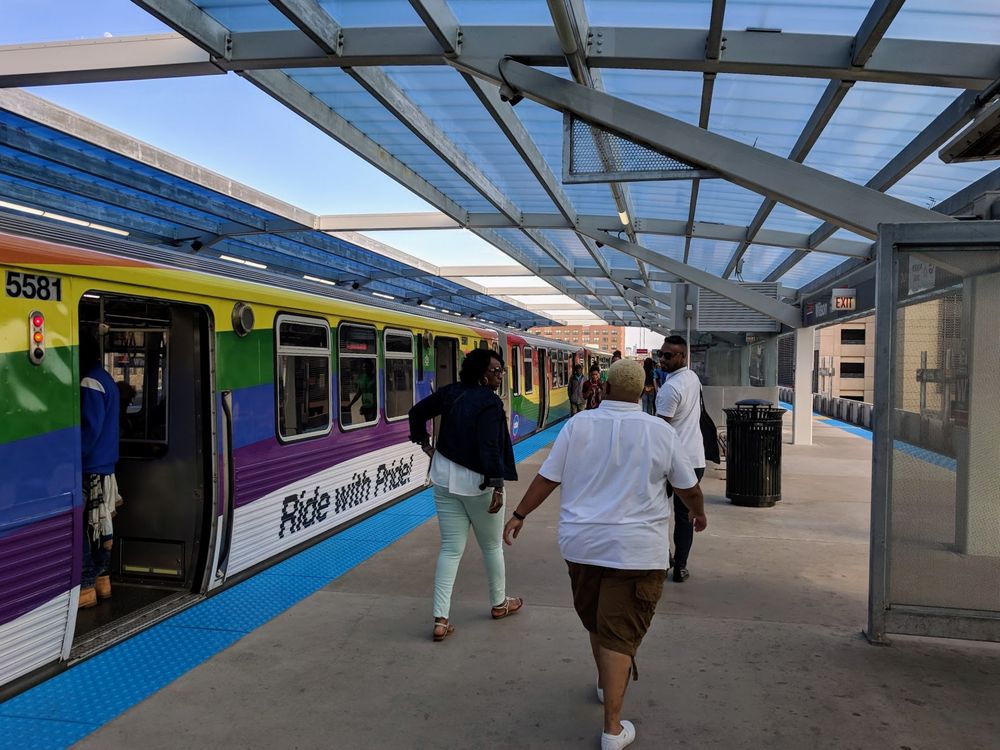
The 2018 Pride Train with a wavy pattern of the classic six pride colors and the words "Ride with pride!" below the window line as people exit the train at the Wilson station. Bonus detail: my partner and family are in the foreground since we were taking the Red Line together!
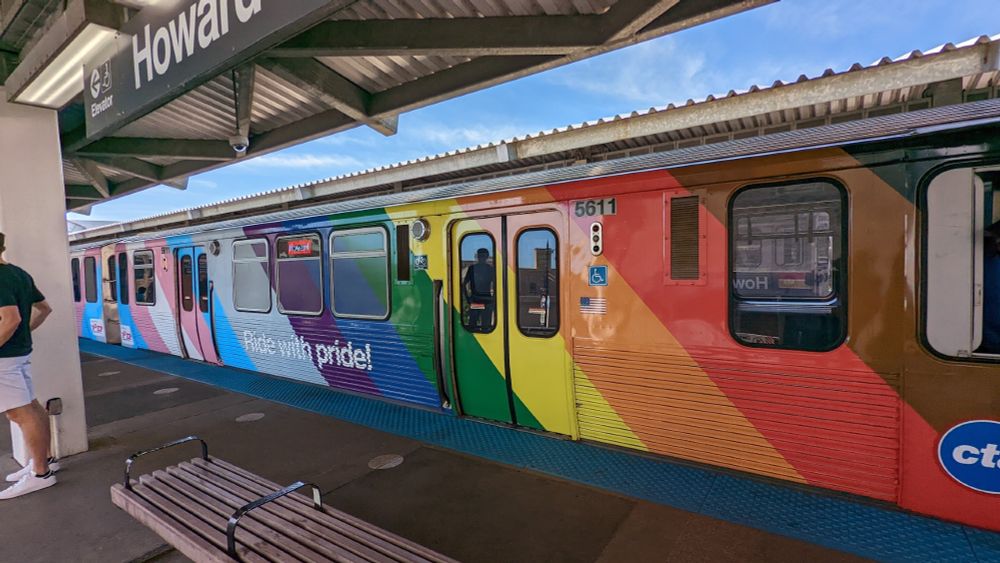
The 2022 pride train stopped at Howard at the end of a northbound trip, which had bold stripes of both the classic pride flag, plus Black and brown in front and then the full set of trans flag stripes at the other end of the car to represent broader aspects of the community as designs progressed.
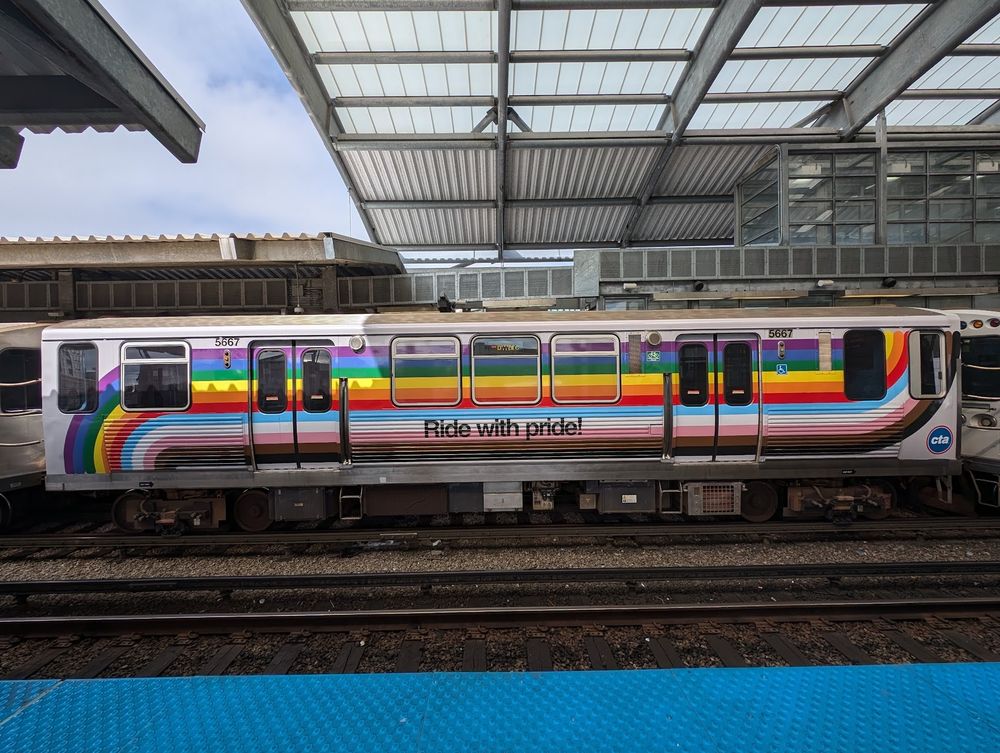
The 2024 Pride Train had a wavy, almost 60s- or 70s-like pattern of stripes that swooped up at one end and down at the other, creating bold horizontal stripes across the car body and inverted rainbow shapes at each end. The design was conscious to put Black and brown and trans colors at the cab ends of each reversible train, so no matter which way the cars were facing, those colors would be seen first as the train comes into view or enters a station.
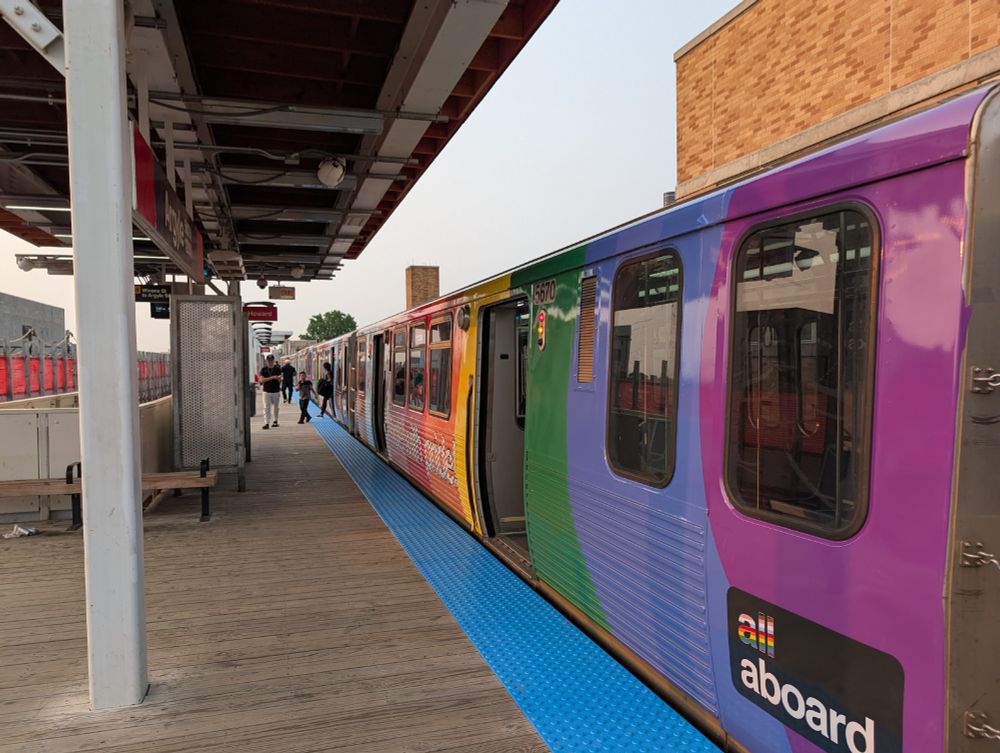
A picture of the 2025 CTA Pride Train with bold, wavy stripes of color, again aligned to put the Black and brown stripes and trans stripes at the front end of each train by ensuring they appear at the cab ends of each car and thus are forward no matter which way the train is rolling along the tracks, with the classic pride colors right in step behind them.
Been meaning to write about this...
I’ve had the privilege to be allowed by my employer to be behind and see to fruition our Pride Train. Every year it’s meant to be a showing of welcoming and inclusion, though started as just a train wrap and mean to run from June 1 thru at least Market Days.

The Republican Party has found its roots: throwing people off their health care and bombing the Middle East.
23.06.2025 15:34 — 👍 2392 🔁 603 💬 113 📌 41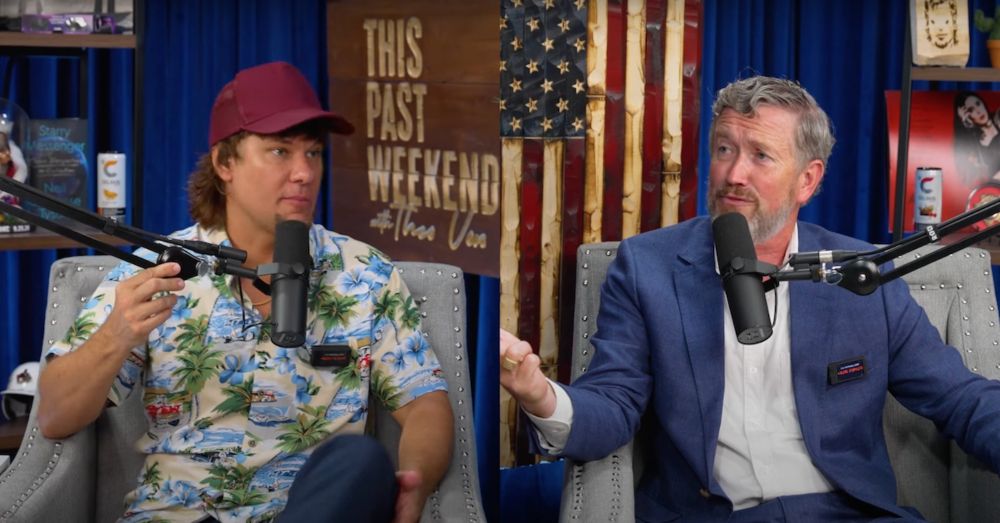
Theo Von had Thomas Massie on his podcast. Nonstop criticism of US support for Israel, AIPAC. Quote: "America is just a shell company, an LLC for Israel"
Nobody calling them antisemitic or threatening to cancel or arrest them. Complete right-left asymmetry on this.
www.mediaite.com/media/podcas...
Protests are critical to resistance to authoritarianism - they help facilitate collective action and overcome preference falsification. There are lots of people who will stand up if others do too.
06.04.2025 11:45 — 👍 953 🔁 188 💬 19 📌 6